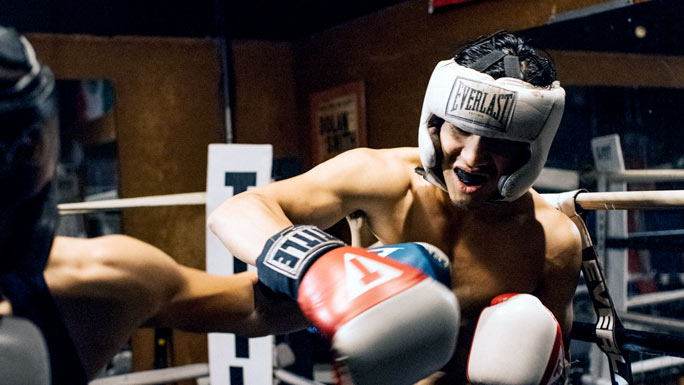
Steps to knock out opponents in a fight.
How to stand, how to generate power, where to aim, and more importantly—how to set opponents up for the kill shot. It takes a little bit of technique and strategy, and a lot of confidence and timing.
It’s crazy that I’ve ran ExpertBoxing all these years without ever writing a post dedicated to getting knockouts. I’ve always thought everyone had the capacity to knock someone out, so why teach it? Well…having knockout power and being able to land it are two entirely different things.
Knockouts are a science! You have to create knockouts. They aren’t accidental events that happen when the stars magically align. There’s angles, timing, technique, and yes, even a bit of genetics and luck.
This is how you end fights with JUST ONE PUNCH!
Fighting Technique for Throwing Knockout Punches
How to Generate Knockout Punching Power
The first step to punching technique is generating power. The two most common power punches used for knockouts are the right cross and the left hook. Straight rights CAN work but they don’t turn the head and don’t generate as much force. Uppercuts also CAN work but they require more skill to throw/land and also leave the puncher vulnerable to counter hooks.
1. Keep both feet planted on the ground.
- In boxing, the MIDDLE position has your weight about 60% on the front leg and 40% on the back leg. It can also be 55/45. And the weight will shift subtly from foot to foot as you throw punches although it’s most ideal to stay in your MIDDLE position.
- Proper stance: Your front foot is angled around 15 degrees, sitting flat on the ground. Your back foot is angled around 45 degrees, with the back heel lifted. Both are hands are relaxed and raised enough to cover your chin but not your eyes. Elbows down, palms facing you, shoulders relaxed. Left hand about 6-12 inches in front of your chin, right hand by your cheek bone.
2. Rotate your feet, hips, and torso.
- If you’re throwing a Right Cross – leave your front foot flat and pivot your back foot 45 degrees (WHILE KEEPING WEIGHT ON IT). As your back foot pivots, your hips will rotate slightly while your torso rotates a little more. Make sure your body weight drills your right leg into the ground. Many fighters make the mistake of straightening the right leg which pops your hip up, making you lose balance and power.
- If you’re throwing a Left Hook – your right heel will sit down flat on the ground while your left foot pivots. And as the front foot pivots, your hips and torso will also rotate slightly to the right. Avoid the mistake of over-swinging your torso during the left hook…most of the “swinging movement” you see is actually in the arms and not so much the torso.
3. Extend (or Swing) the elbow.
- For the Right Cross – lift and extend the right elbow as you launch your fist forwards. It helps to imagine that the elbow is slightly curving more into the lift first and THEN going forwards. Some fighters like to imagine the elbow extending forwards right away but this isn’t as practical as the elbow takes longer to reach the supported (“lifted”) position and doesn’t give your punch leverage until the very end. (See examples of right cross knockouts.)
- For the Left Hook – lift and swing the left elbow across your body as if the elbow is part of your glove. Many fighters don’t lift the left elbow high enough and this decreases leverage (and power) from the hook. It’s important to note that you’re lifting the elbow and swinging your entire torso 15% and the arm 35%. Why does this add up to only 50%? It’s because I want you to visualize that the hook doesn’t swing all the across your full range of motion. It only swings across part of the way, and the swing is expressed powerfully through a small “twitch” movement in the torso and then a little bit of swing in the arm. Again, please imagine that your fist and elbow are reinforced as one solid unit during the left hook. (See examples of left hook knockouts.)
4. Unified exhalation and fist squeeze.
- Your whole body (especially the hands) start out relaxed before the punch.
- Right as you throw the punch, you make a tight exhalation sound right at the moment you punch. Some will even clarify that you make the exhalation sound right and whole your body (and punching hand) contracts right when the punch lands to solidify your entire body into the shot.
- For more detailed and advanced instruction, read my articles on punching techniques.
Where to Aim for Knockout Punches
1. Head
- Jaw – best place since it’s the farthest point from the neck (more leverage) and built like a protruding piece of smaller fragile bones (easier to damage and/or turn the head). Land a big punch on the chin from an angle and you’ll either knockout your opponent or make him extremely dizzy. Can be targeted with crosses or hooks.
- Behind the ear – extremely vulnerable since it’s close to the back of the head where there are many vital nerves that control the brain’s function and organs that control the body’s equilibrium. The back of the head is also less protected (less bone density than the front of the head). Great for wide hooks reaching around the opponent’s guard or against aggressive fighters that over-swing themselves off balance.
- Temple – vulnerable area due to a frontal placement on the head and lower bone density compared to other areas of the skull (like the forehead). Punches landed here can easily impact the brain and make opponents dizzy. Highly recommended target since some fighters that have great chins can have vulnerable temples, and also because most fighters will keep their gloves low to guard the chin AND avoid covering their vision.
2. Body
- Stomach & Liver – incredibly vulnerable place that inflicts a lot of pain on conscious opponents (unlike head punches which affect their consciousness). Well-landed punches to the stomach or liver can drop an opponent to the floor in pain, slow down their footwork (since the core muscles here are connected to the legs), sap their endurance and take some steam out of their punches. Body punches can also indirectly help cause knockouts since targeting these areas may cause an opponent to lower his guard and expose his head.
- Solar plexus – especially painful place on the body that can take the wind out of your opponent and leave him rolling on the ground in pain. There is not much an opponent can do to condition this area to take punches. The only downside is that it’s hard to target. The best way to target this is with your right hand while he throws his right hand.
- Ribs – vulnerable areas on the body that are not only painful when targeted but can also break.
Training for Knockout Punches
As with anything in life, it helps to train and get accustomed to the situations that present opportunities for the knockout. While punching technique and physical conditioning is critical to a fighter’s ability, it is also expected that most fighters possess such ability. To really get an advantage and reach a skill level beyond other fighters, you will need to work on timing & angles.
The 2 most important aspects for getting the knockout:
TIMING & ANGLE.
The best TIMING for landing a knockout punch is for you to land the punch as your opponent is throwing his. Not before, not after. You have to land your punch RIGHT as he’s throwing his fully body weight into his. The combined momentum is what maximizes the chance of you creating a knockout. It has little to do with HOW HARD you punch and more so with WHEN you punch. This advice does go against the conventional wisdom of “box more, fight smart, don’t exchange with him”…but remember—you’re going for the knockout, right?
The best ANGLE for landing a knockout punch is when your opponent is turning into your punch. For example: his head is turning right into your left hook (like when both of you are trading left hooks)…or his head is turning right into your right cross (like when you’re trading right crosses). The best angles add leverage into the punch using his momentum against him. But beware, the same angles and timing could also leave YOU vulnerable!
Sparring
- Sparring is the best drill and skill-development activity for learning how to throw knockout punches. It gets you comfortable with fighting and learning how to find and seize opportunities for knockouts. There is no practice better than live practice. Get in the ring with a live opponent, move around and throw punches so you can see what areas you do well and what areas you don’t. Even better if you have a coach to tell what things to focus on. (Try my sparring drills.)
Mitts
- A great tool for developing punching techniques, combinations, angles, and most importantly—COUNTER-PUNCHING SKILLS. Mitts will allow you to practice different angles as many times as you want and improve your accuracy and timing for these exact angles. You can work as many different angles as you want but do know that mitts can never substitute the practice of facing a live opponent. (Try my favorite mitt drills.)
Double-end bag & Speed bag
- Incredibly tools for developing your rhythm, timing, and accuracy. The double-end bag is especially neglected by many fighters and most often by the fighters who need it most. You need to get used to hitting a moving target AT THE RIGHT TIME. These two bags will help you develop faster hand speed and more importantly, the perfect hand-to-eye coordination for landing knockout punches. You’ll get used to catching an opponent right as he comes into you. (See my double-end bag drills.)
What about the Heavy Bag?
- I feel the heavy bag is overrated and if anything, can stagnate your ability to land knockout punches. Hitting the heavy bag all day can make your eyes lazy as you don’t have a fast moving target to train your coordination and timing. The heavy bag is also a big target that doesn’t require much accuracy. The heavy bag only works your power and endurance at best and while these qualities are still important, they are not essential for creating knockouts.
Fighting Strategy for Landing Knockout Punches
Best Knockout Punches
Right Cross Exchange
- The absolute strongest counter-punch you can land on an opponent. It’s you landing the biggest punch from your strong hand using an opponent’s momentum as he throws his biggest punch. It does far more damage if he swings his head into the punch. Make sure you aim for his chin. The punch does more damage if you keep your eyes on him but some brawlers or skilled fighters (even pros), will duck their head down at the moment of impact to avoid the counter.
Left Hook Exchange
- Another deadly counter-punch using an opponent’s momentum against him. Try aiming for his chin or even his temple (if he doesn’t hold his glove higher) and MAKE SURE YOU KEEP YOUR RIGHT GLOVE UP and CHIN DOWN. Most coaches will tell you “never hook with a hooker” so that tells how you how dangerous this trade is.
Right Cross over the Jab
- One the easiest counter punches to land and effective even late in the fight when fighters take longer to retract their jabs. Look for his long jab and dip your head to the inside as you throw a right cross over his extended arm. It does more damage if you land the cross right as his jab is coming out; even better if he throws his head in with the jab.
- ALTERNATE METHOD (even more power): land your cross as he throws his right hand right after his jab. This would require good timing and even a little bit of patience. You first slip outside the jab and THEN come back with your right hand as he throws his right hand. In a sense, this is a right-hand trade.
Left Hook against the Right Cross
- FIRST METHOD – land your left hook BEFORE his right hand comes out. Your left hook should land right as he cocks his right hand back. While most fighters will happily aim for just the side of his head (big easy target), you can do more damage if you aim right for his chin or temple. In case you’re afraid of getting his by his right hand while you throw your hook, you can avoid his counter by turning your head with your hook (it takes some steam off the shot even if it lands).
- SECOND METHOD – land your left hook AFTER his right hand comes out. It’s almost the same thing but with a slightly different nuance. This method may feel more defensive since you can make sure that you safely defend first and THEN try to catch him right after his punch misses (or lands on your guard). You can do this in a slick way by rolling with his punch and throw your left hook over his right hand. Or you can do in a sharp catch-and-shoot way where you catch his punch on your guard and then quickly release your hook as you pivot your body hard.
Hooks against a Guarded Opponent
Wide punches work well against shelled up opponents since they’re covering their vision somewhat and less able to see punches coming from the sides. It helps to mix up different punches to the head and body, straight and curved, to keep him guessing.
- Hooks to the head – throw a left hook or overhand right around his guard into his chin, temple, or behind the ear. If his gloves are covering his forehead, aim for his chin (squeezing between his forearms and shoulders). If his gloves are covering his chin, aim for his temples (over the gloves) or his ears (around his gloves).
- Hooks to the body – throw hooks to his ribs and you might even hit the liver if he dares to lift his gloves for a counter punch. It helps to throw some punches straight into his face and body to make his arms concentrate on blocking at the front, allowing you to curve around them to his sides.
Knocking Out Aggressive or Unskilled Opponents
There is no easier opponent to knock out than the aggressive opponent. All you need is the confidence to stand with him, a little bit of technique, and the timing to make your counters count.
Run him right into your right cross
- He goes forward, you keep your head down and put launch the biggest right cross you got into his face.
- If he’s too aggressive and throws too many punches, stay defensive and wait for his right hand…then trade yours with it.
- Stick your left jab out to keep a distance or pivot off so he falls through, and then come back with a big right hand.
- Feeling too vulnerable standing in front of him? Try ducking down and targeting his body while he’s headhunting.
Catch him with hooks
- Too scary to trade right hands? Or maybe he ducks a lot? That’s fine, he probably can’t see your left hook coming in from the side. Throw’em at the same time he throws his right hands and make sure you keep your left elbow high so it impedes his right hands from coming in clean.
- Any time he throws a right hand, throw a left hook and turn away a little bit.
- Any time he throws a jab, throw a long left hook.
- Duck under his punches and come back up with big hooks to the head or body.
- Pivot off and throw hooks into him with either hand.
Knocking Out Defensive or Skilled Opponents
More defensively-responsible opponents are much harder to knock out. They’re always guarded and they move a lot. There’s no free openings or easy shots to look for. You practically can’t knock them out without the risk of getting yourself knocked out. A seemingly impossible puzzle for some to solve but for me…that’s where the fun of boxing begins…
Pressure Him
- You need him to expose himself for you to land the knockout punch. So either he’s crazy aggressive and does the work for you, or he’s smart & cagey and you need to pressure him into exposing himself.
- Follow him around, and he’ll probably try to move away or fend you off with jabs. Get close and he’s bound to uncork a hard right hand or vicious left hook at some point. Be ready for it, expect it, and take advantage of it!
- See my list of deadly bait combinations.
Over-extend his jab
- This is a straight-up pro move. Don’t counter his jab. Arguably one of the worst counters you can throw is a fast jab against a slightly slower jab. WHY?! Because it makes him sharpen up all his punches. Next time he throws a slow jab, don’t counter it! Make him reach a little more. Make him over-extend himself so that he comes slightly off balance and takes longer to recover. The idea here is to stretch him out just long enough for you to get that right hand in.
- Pull your head slightly back and forth. Keep moving, pivoting around, and slipping his jabs…and stay patient! Make him reach, make him anxious to land a shot. You’re looking for a lazy jab, or even better—THE RIGHT HAND—then counter him!
- Be careful that you don’t give up too much ground running this tactic. A smart opponent can pressure you into the corner and believe me, he’s cautious of you itching to throw that big right hand. You have to semi-commit to some jabs to mask your waiting right hand.
Make him over-swing
- Another pro move. Fighters are more vulnerable after they miss a few punches. Why? Their technique is too good to for them to lose balance after the first missed punch. This can take up to 3 slips in a row before you can counter—so you’ll need A LOT of skill and patience. How it works is you slip not only his first punch (most likely the jab), but also his second and maybe even his third punch. What we’re looking for is the big left hook. Slip his jab slightly, bring your head awfully close into him as you slip his right hand, and then DUCK UNDER or LEAN BACK when he swings an anxious left hook. Then come back with big counter hooks to the head or body while he’s still recovering his balance.
- Another tactic to make this easier is to block some of his punches. Block his jab, block his right hand, and then duck or lean away from his left hook. You could also duck or lean away from his right hand, but there’s no guarantee he’ll miss long enough for you to counter. The right hand is only vulnerable if he throws his weight in with it, but that will probably only happen when he’s tired.
- You don’t always have to be in front of him when he swings past you. You can pivot away at the same time (hope he falls through) and come back with some big counters. This probably won’t happen though as the thinking fighters don’t extend themselves too often. They’d rather wait for you to enter their space.
Bore him
- Smart fighters will wait all day for you to make a mistake. But what if you don’t make ANY mistakes? What if you don’t take any chances at all? That might be enough to get him out of his shell. Keep walking around him and don’t invest any more in the fight than he does. Stay disciplined and stay patient. Getting knockouts against smart fighters requires a little patience.
- Keep it a jab fight. Keep moving in and out. Even if he happens to lose composure a bit or almost trips, don’t chase him down just yet. Keep moving around and let him get comfortable. At some point, he throws a lazy jab or leaves a punch hanging for too long and not expecting you to counter. This is the perfect moment to lunge for a lead shot or pretend to move away but instead turn back and whack him with a hard shot.
- Play possum. He’s probably doing what you’re doing—WAITING FOR AN OPPORTUNITY. So give him what he wants. At some point when he hits you (or thinks he hit you) with a shot, play it up a little. Let your body language go quiet and shell up a little more. Take a back step and collect yourself towards the ropes. Take your eyes off him and soften up your body language a little bit. Then knock him the hell out when he tries to finish you.
Having the Right Mentality (Confidence) for Getting Knockouts
More important than having the power and skills to land the knockout punch is having the confidence. All the knockouts I’ve seen were never by accident. When was the last time you’ve seen a fighter get scared, close his eyes and land a lucky knockout shot? Knockouts don’t usually happen that way.
Knockouts rarely happen by accident.
It’s more like a guy confident in his power, knowing he can knock someone out, REALLY wanting to knock someone out, then going for it, and then actually getting it. That’s like 5 layers of confidence right there. And you can develop that pretty easily if you don’t have it.
1. Work on your technique
- Start hitting the heavy bag, mitts, and sparring partners. Having good technique is the fastest and easiest way to multiply your power by 2 or 3 times.
2. Start sparring
- There is no better confidence-booster than trading shots with other fighters and seeing where you stand. And the more fighters you hurt over time, the more you’ll start to believe in your own power.
3. Be aggressive
- You have think aggressively. You have to want to fight and want to hurt your opponent. Thinking defensively and waiting for the right opportunity is still a smart way to land deadly counters but it only works when you have confidence in yourself.
Oh and one more thing…it wouldn’t be responsible of me to teach fighters how to knockout their opponents if I didn’t also teach how NOT to get knocked out yourself.
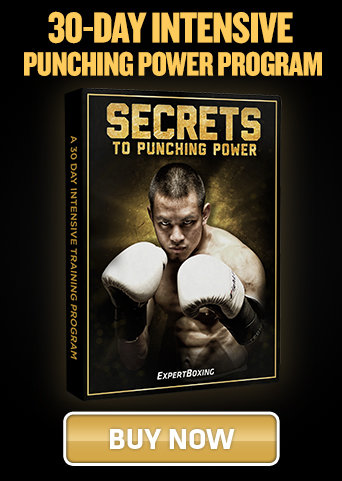






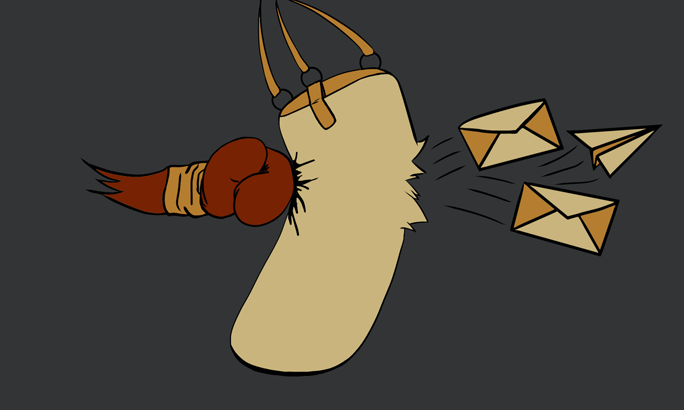
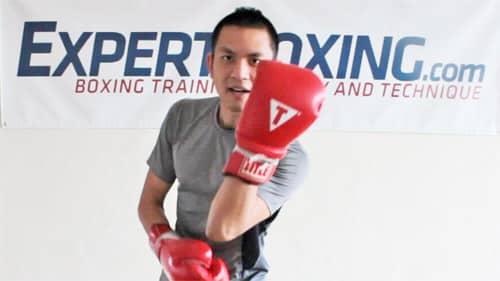
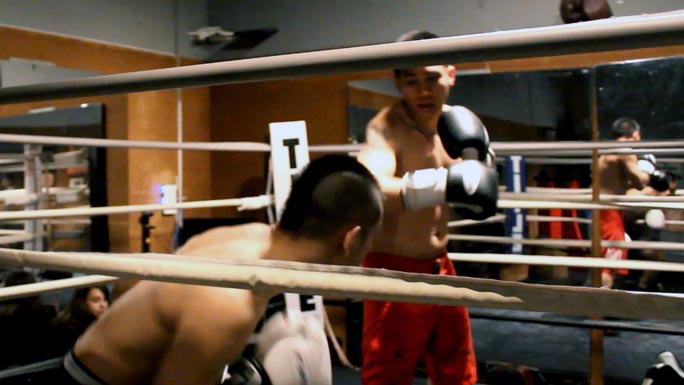
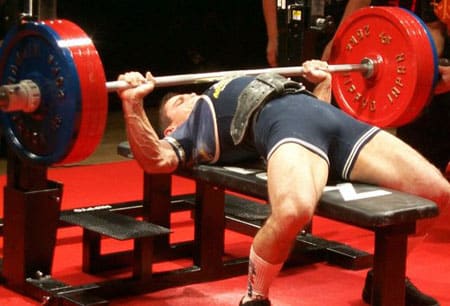
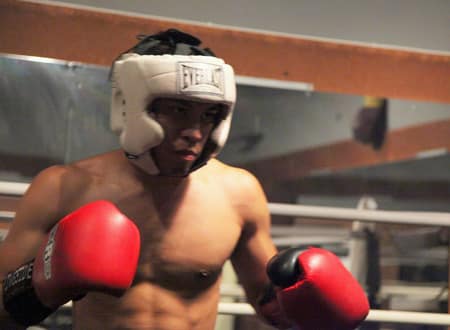
Bro you have no idea how much I needed this. I have the power but what I lack is the proper technique for knockouts. Thank you so much! I’m gonna start knocking my opponents out now.
I’m happy you like it, Jonathan! It’s true…most guys have the power but not the setups. Let me know how it goes. (And post more vids for us!)
lol. you go!
Great article as always, keep em up Johnny
I would definitely caution anyone reading this because there will be a lot looking for a quick fix to a problem that they are not qualified to make go away. When I used to fight a lot, I often ended the fights with a knockout but it wasn’t from power, it was all technique. I’ve had skinny arms since I was made and it didn’t matter how hard I hit the weights, they never got to be big, my hands weren’t made for boxing but my speed and my accuracy were consistently what won me the fights. I spent a lot of time with the speed bag, I never missed my target and I never left myself open with a slow, sloppy punch. A lot of guys will try to utilize a haymaker that tells their opponent from across the ring that a special punch is coming up and if he’s prepared he can take advantage.
I tired my opponents out. I broke their morale. I loved breaking noses and swelling eyes because they both will grind down any opponent every second he stays in the fight. Make him hurt. Work the ribs. To go for a knockout punch early is risky and will only work against an opponent if you’re significantly better.
I been looking at oppoents who were sitting or laying down, usually fairly bloody…the knockout was because they had no will left, so if you use a good hook to the temple to sit them on the canvas, for a boxer who knows he is beaten whether he gets up or stays down…standing up becomes a really tall order.
Chris,
Great post, Thank you for the solid advice!
I’m always concerned how Gennedy Gorovkin throw his punches?He throws punches not always like with big body movement and seems not very fast ,but when the punches landed,his opponent are obviously effected.What’s the secret of GGG’s punch?
Haha, you’re asking a lot of advanced questions that I wouldn’t even know for myself. From my eye, he has great leverage and great timing. His joints are always in the right positions, and all punches land with his body in the right place. Yes, some guys are too fast…their arms arrive in good position but their hips and legs are not. As for GGG’s timing, he’s a master strategist and knows how to put you in position for his hardest punches. In a sense, he makes you come into his punch instead of making his punch come to you.
Hmm,that’s the reason why he’s not comfortable when facing fast boxer like Canelo and Jacobs.Because it ‘s hard to put a fast one in right position.
Haha, I don’t know if anyone can ever be too comfortable at the championship level but I do think GGG looked more comfortable than Canelo and Jacobs.
Great observations, and very helpful. I will be considering all this. Thanks!
-S
Stomach and Liver Targets – the soft tissue areas under front of ribs on left and right sides?
Yes.
You also need to be careful you don’t kill your opponent